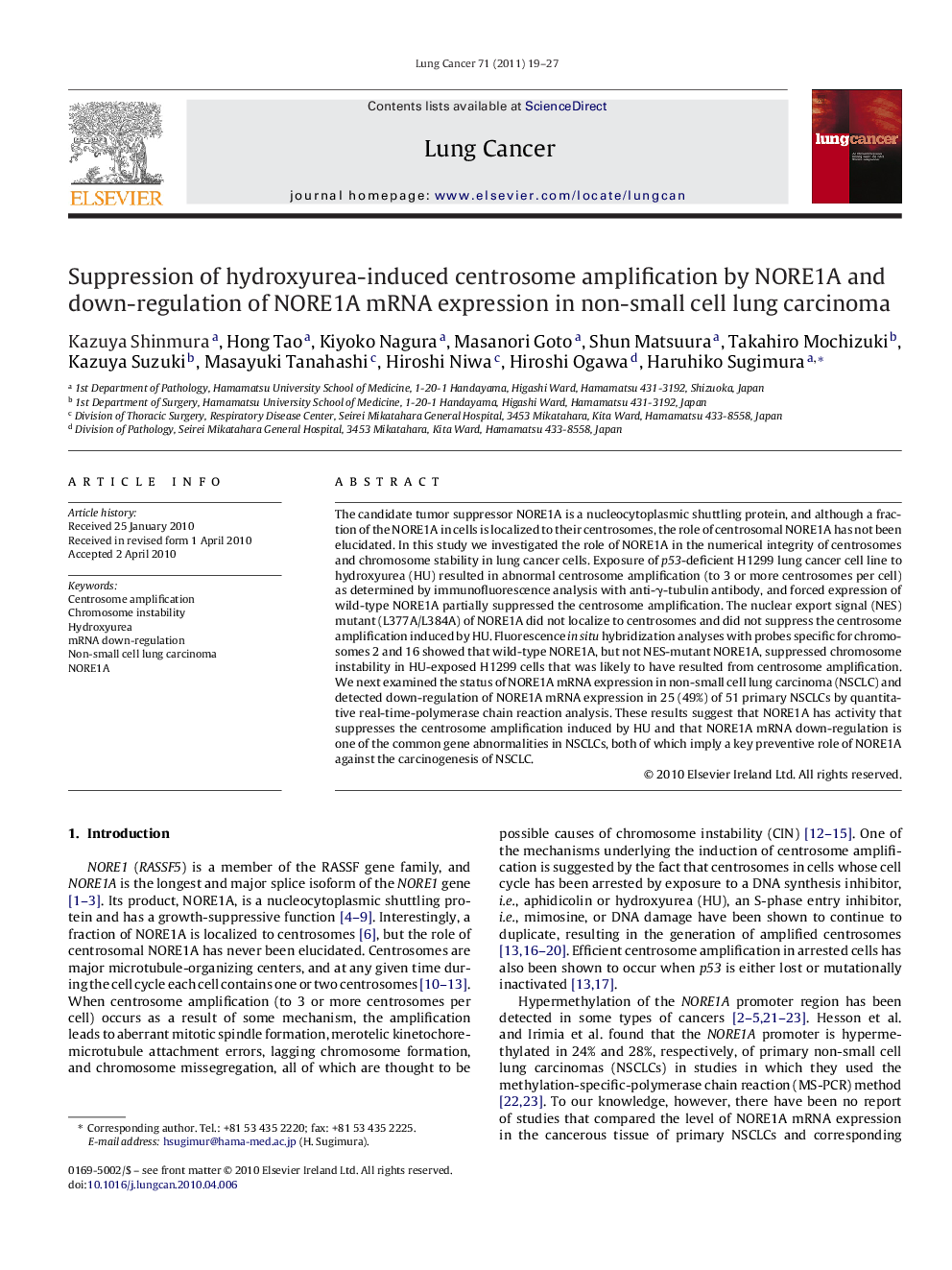| Article ID | Journal | Published Year | Pages | File Type |
|---|---|---|---|---|
| 2142194 | Lung Cancer | 2011 | 9 Pages |
The candidate tumor suppressor NORE1A is a nucleocytoplasmic shuttling protein, and although a fraction of the NORE1A in cells is localized to their centrosomes, the role of centrosomal NORE1A has not been elucidated. In this study we investigated the role of NORE1A in the numerical integrity of centrosomes and chromosome stability in lung cancer cells. Exposure of p53-deficient H1299 lung cancer cell line to hydroxyurea (HU) resulted in abnormal centrosome amplification (to 3 or more centrosomes per cell) as determined by immunofluorescence analysis with anti-γ-tubulin antibody, and forced expression of wild-type NORE1A partially suppressed the centrosome amplification. The nuclear export signal (NES) mutant (L377A/L384A) of NORE1A did not localize to centrosomes and did not suppress the centrosome amplification induced by HU. Fluorescence in situ hybridization analyses with probes specific for chromosomes 2 and 16 showed that wild-type NORE1A, but not NES-mutant NORE1A, suppressed chromosome instability in HU-exposed H1299 cells that was likely to have resulted from centrosome amplification. We next examined the status of NORE1A mRNA expression in non-small cell lung carcinoma (NSCLC) and detected down-regulation of NORE1A mRNA expression in 25 (49%) of 51 primary NSCLCs by quantitative real-time-polymerase chain reaction analysis. These results suggest that NORE1A has activity that suppresses the centrosome amplification induced by HU and that NORE1A mRNA down-regulation is one of the common gene abnormalities in NSCLCs, both of which imply a key preventive role of NORE1A against the carcinogenesis of NSCLC.
